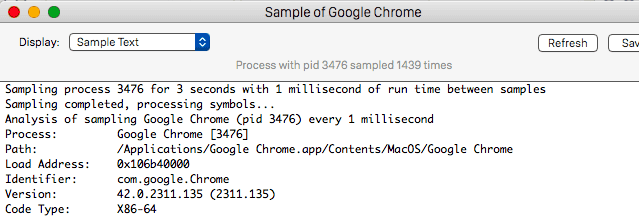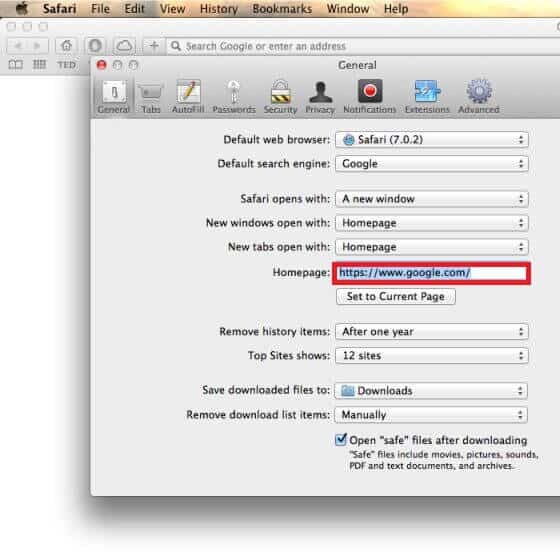Tapufind
Tapufind is an unwanted extension for macOS browsers that hijacks the browser’s starting page and search engine and floods them with ads. Tapufind may also reroute your web traffic to potentially misleading and unsafe websites where your Mac can get infected by more dangerous threats.
Tapufind is an extension app for different browsers, that is known for hijacking the affected browser and installing new components in it without an Admin’s permission. Tapufind is regarded as an unwanted app because it may mislead the user.

This page reviews the Tapufind Virus – a kind of a browser hijacker. The typical characteristics of all the existing browser hijackers we can mention are explained here:
- Such programs might simply infect and change all of your browser apps: Explorer, Opera or Chrome, and Firefox.
- Following the act of getting infected by such a program, your browser apps could launch the generation of a very big number of online ads (such as banners/ boxes/ and/or pop-ups). Most importantly – such a massive production of advertisements may take place whenever you try to surf the web.
- Other possible consequences of a Tapufind-based infection are the likely redirecting processes, which your browser apps may launch. They could start opening websites you have never meant to go to.
- One more likely result of an infection caused by a hijacker is the potential modification of your browser apps’ homepages and search engines. What you should definitely expect is to be shown some really unfamiliar search engine/ homepage whenever you load your browser apps, whichever of them you open.
Remove Tapufind on Mac
You can try to remove TapuFind with these simple steps below:
- Click on Finder to open the Finder application and then go to Applications.
- Open Applications In the Finder left pane.
- Search for Tapufind or any application that you do not recognize and delete it.
- Click on Empty Trash to remove Tapufind from Mac!
In addition to the potential effects mentioned in the introduction, all browser hijackers represent some strictly advertising-oriented software. In brief, this means the usual way they act is normally related to the reason why web developers design them in the first place. It is actually very simple – the mere purpose of any programmer is to make more money. Among the people who can provide this money are the manufacturers of goods and the service providers who need to get their products promoted in the most efficient way. The mutual needs and wishes of these two parties have brought the programs known as hijackers to life.
MacShiny.com is just an example of the many redirects you can get while Tapufind Virus is in your system.
Tapufind Virus
The Tapufind virus is malware from the browser hijacker family and its purpose is to redirect your browsing to different advertised sites. The Tapufind virus won’t harm your system but it may still indirectly expose it to more harmful threats like Trojans or Ransomware.
Honestly, there is nothing similar between any version of a browser hijacker and any virus-like program. On the other hand, there have always been a number of considerable differences between these two types of software. As an illustration what makes a Ransomware representative different from any member of the browser hijacker group is the ability of the Ransomware programs to encrypt predetermined lists of data, making all the files there inaccessible. On the complete opposite, the Tapufind Virus can never access any of your data. In fact, any hijacker may simply access your browser apps’ databases, collect the details about your recent searches and browsing patterns, and as a result, show to you only the pop-up and other ads that may be related to these patterns and searches. Therefore, based on all these differences, we can surely say that browser hijackers have never been members of any malicious software category. Nonetheless, they may be rather suspicious and unwanted, as their ways of infecting a device could be unclear and shady, and all the possible effects they might have on your browsers could be too much to bear.
You might find it hard to believe, but browser hijackers can never invade any PC by themselves. On the contrary, they always have to ask you for your approval first, and only after that can they become a component of your PC. However, this may happen in a rather shady way, because such software almost never gets willing approval from the victim users. To be clearer, one of the most common and legal methods of spreading browser hijackers is by including them in program bundles (free mixes of games, apps, and programs). In this way, you are willingly going to download any bundle and perhaps impatiently install all of it, leaving your system infected by an ad-broadcasting program.
Usually, an infection could follow if you download any bundle and install it by using the improper installation feature. Consequently, our sincere advice for you is to merely stay away from the unsafe ones like the Default, Easy and Automatic options, which any installer could offer you. This, in turn, begs the question: What can be done if you still want to use something from a bundle, but you need to stay away from programs like Tapufind? And the answer is to simply learn to opt for the Manual or the Customized steps of the installer that is displayed. These steps will give you access to choosing exactly the programs and features that you want on your PC.
SUMMARY:
| Name | Tapufind |
| Type | Browser Hijacker |
| Detection Tool |
How to remove Tapufind from Mac
You can remove Tapufind from Mac manually or with the help of a specialized anti-malware tool that can eliminate the hijacker automatically. If you want to remove Tapufind from your Mac, we suggest you combine both of those methods to ensure best results.
In the next lines, we will try to help you get Tapufind removed from your Mac by offering you detailed removal instructions that we advise you to follow if you currently have the hijacker on your computer.
The first thing you should do is try to uninstall the Tapufind extension from your Safari browser. In some cases, if you simply remove the extension that has brought the hijacker into the browser, this could be all that is needed to resolve the problem, so try this first and if it doesn’t work for you and you are still experiencing browsing disturbances, continue with the more advanced and time-consuming steps you will see further down this guide.
- First, go into your browser and access its Extensions Manager (Safari Menu > Preferences… > Extensions tab).

- Once you are at the extensions of your browser, see if there’s one named Tapufind. If you find it, click on the Uninstall button next to it to remove it.
- If there isn’t an extension with the Tapufind name on it, this doesn’t necessarily mean that there isn’t an extension that must be removed. Look carefully through all the extensions in your Safari and see if any of them seem odd, questionable, or suspicious. If there are ones that seem to have gotten installed automatically, delete them as well as any other extensions that you do not trust.
- If you haven’t been able to find any suspicious-looking add-ons, you could always simply remove everything – your browser’s performance won’t suffer even if all extensions get uninstalled. It is a good idea, however, to uninstall them one extension at a time so as to figure out which one is causing the disruptions in the browser and then safely reinstall the other ones that are not being problematic,
![]()
If Tapufind isn’t letting you close Safari, you will need to Force Quit the latter. You can Force Quit an app by going to the Apple Menu, clicking on the Force Quit option, then selecting the app you want to close, and clicking on the Force Quit button. Do this with Safari if you cannot close the browser normally. If even this method doesn’t work, simply restart the whole computer.
![]()
WARNING! READ CAREFULLY BEFORE PROCEEDING!
In this next step, you must find the hijacker process in the Activity Monitor and kill it. First, access the Activity Monitor by going to Utilities > Applications and opening the Activity Monitor icon. Now, try to find the Tapufind process in the list of processes that shows up on your screen. Again, the process that corresponds to the hijacker may not be named Tapufind but something else – use your discretion to determine which is the process run by the hijacker. Possible red flags are high use of CPU and/or RAM memory or an obscure name that doesn’t seem to be related to any apps or programs that are currently running on the computer. If there seems to be a suspicious process in the Activity Monitor that you think could be related to the hijacker, be sure to first search for its name online to find out if it isn’t something related to your macOS. Accidentally quitting a system process could destabilize your Mac so it is important to know that the process you are about to kill isn’t from the OS.
If any particular process has caught your attention and you think that this one could be coming from the hijacker, select it and then click on the Information button. From the next window, select Sample, and then click on Save. Choose an easily accessible place, such as the Desktop, to save the sample file.

Now, bring the file you just saved to the online scanner you will see below and scan it for malicious code.

In case our scanner flags the scanned file as malware, you must go to the Activity Monitor again, select the sampled process, and kill it by clicking on the X/ Quit Process button. You can now delete the sample file.

![]()
Now you must open the browser again without any pages that were previously opened being allowed to load. Holding down the Shift button while opening Safari should do the trick in most cases but if even after you do this there are pages that the hijacker loads in Safari, then Force Quit the browser again (as you did in the first step) and disconnect your Mac from the Internet.
- If your Internet connection goes through an Ethernet cable, you can simply remove that cable from the computer to stop the connection. For Wi-Fi users, you can either turn off the router or, if you don’t have access to it, you can hold down Option from your keyboard, select the Wi-Fi menu at the top, and click on Turn Wi-Fi Off. To turn back your Wi-Fi, go to that same menu and select the Turn Wi-Fi On option.
Once the computer’s Internet connection has been stopped, try opening Safari in the way we described above once again.
![]()
Now that you are in Safari and the hijacker has been prevented from loading any of its pages or opening any new tabs in the browser, go to Safari Menu > Preferences and open the Extensions section as you did at the start of the guide. See if any of the items you removed from there have come back to the browser without your permission and if they have, uninstall them again.

Next, go to the Privacy section and clean your browser’s data from the Remove All Website Data button. Confirm the action when asked whether you are certain that you want to this. Also, know that once the browsing data is deleted, you will have to manually re-enter all of your online accounts so make sure that you know your login credentials before you execute this action. If you have never deleted the website data from Safari or if you haven’t done it recently, this process could take some time to complete so don’t interrupt it and wait patiently for it to finish.

Now it is time to go to the General section of Preferences and check on the homepage of the browser. If it seems that the hijacker has changed it without your permission (in most cases Tapufind changes the homepage automatically), bring back your previous homepage, removing the one added by the hijacker.

Note that the changed homepage is one of the main ways hijackers like Tapufind manage to get more ads and redirects inside the users’ browsers. This could become a serious problem if the newly-imposed homepage address originates from a misleading and unsafe site or if it links to such a site(s). It is, therefore, important to not ignore any changes to your browser’s homepage and to quickly ensure that the address added by the hijacker is removed.

The final part of this step is to open the History menu of Safari, to select the Clear History option, and then to click on the Clear Browsing History button. Just make sure that the time period for which the browsing history would be deleted is set to “From the beginning“.
![]()
The same browser-cleaning procedure from Step 4 must be completed for all other browsers that are present on your Mac as the browser hijacker has likely affected them as well.
![]() Removing ads from Firefox for Mac:
Removing ads from Firefox for Mac:
To clean Mozilla Firefox, open the menu of the browser, go to Add-ons > Extensions and delete the items you consider suspicious and/or potentially problematic. Just like with Safari, if you can’t be sure which extension is causing disturbances in the browser, you can delete all of them without hesitation.

After you are done with removing unwanted extensions, follow this link where you will find a more detailed explanation on how to clean the rest of the Firefox browser.
![]() Removing ads from Chrome for Mac:
Removing ads from Chrome for Mac:
In Chrome, go to Chrome Menu > More Options > Extensions and, once again, clear the browser of add-ons that you think should not be in it.

Next, go to the Settings of Chrome, type Search in the search field, and select look at the Manage Search Engine options. Pay attention to the search engine that Chrome is currently working with. If there are search engines in there that you haven’t heard of before and/or that look unreliable, delete them, leaving only ones that you are familiar with and that you know you can trust.
Finally, go to this page to get more information on how to restore Chrome to its normal state and follow the instructions there.
Final Notes
In nearly all cases, after completing the steps we’ve posted here, you should have resolved the problem you’ve had with the hijacker and there should no longer be any unpleasant browser disruptions. Still, if you have faced any obstacles during the removal process or if, for some reason, the guide didn’t work for you, feel free to hit us up in the comments section, telling us about your problem, and we will try to get back to you on a short notice.

Leave a Reply